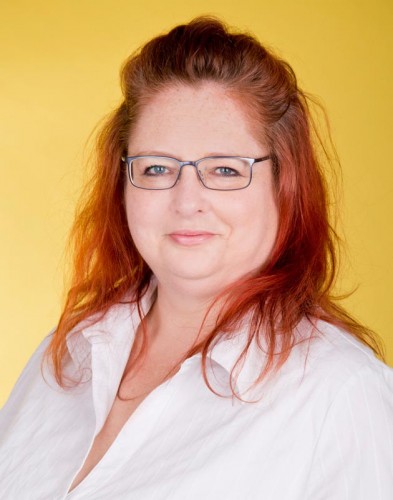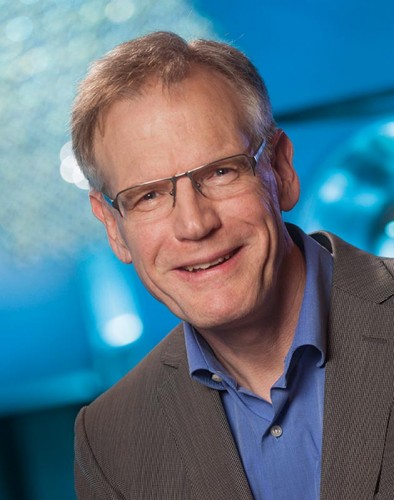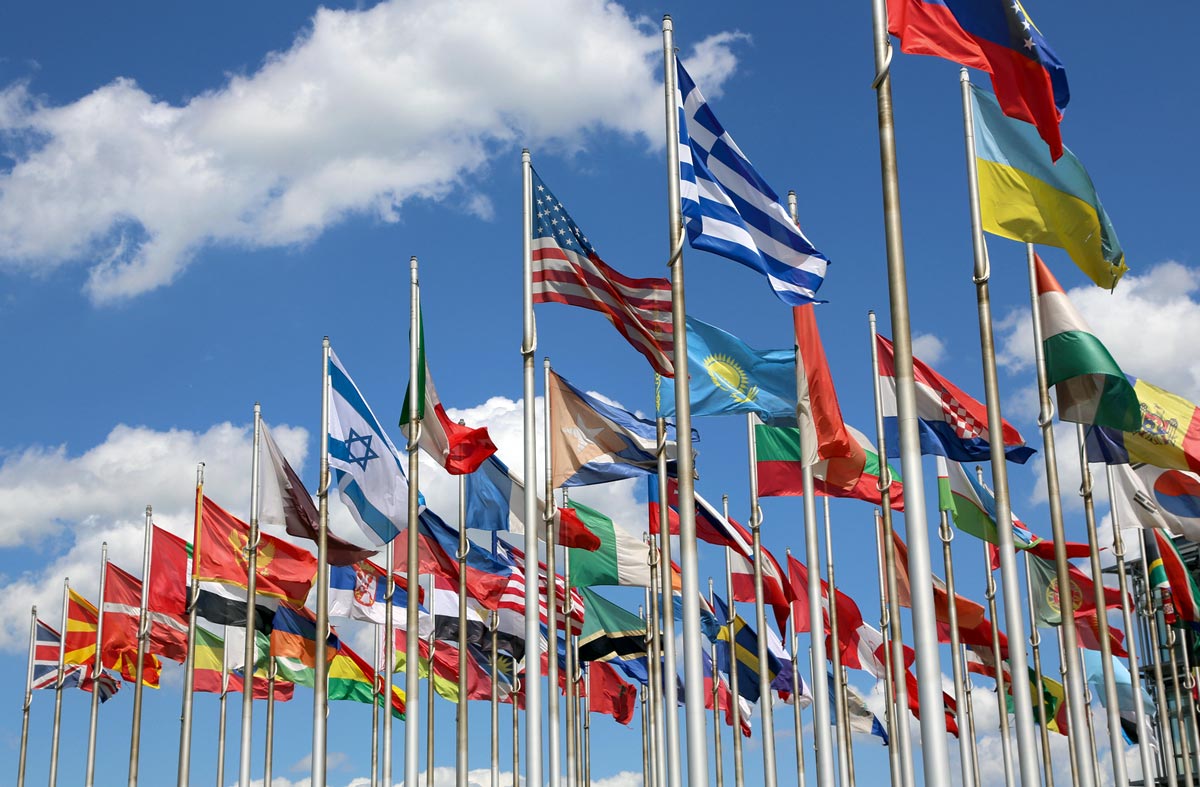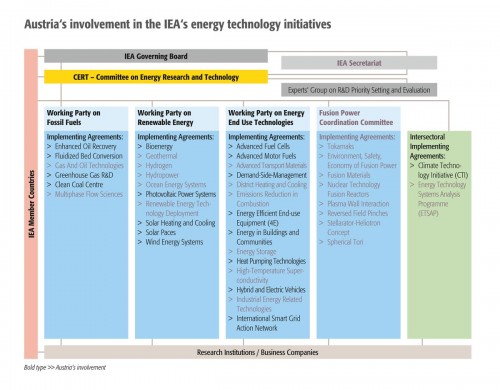In the IEA all decisions are taken by the member states. The highest level of decision is the Governing Board, which meets regularly to set strategic priorities for the IEA‘s activities.
Strategies and activities for energy research
Committee on Energy Research and Technology (CERT)
In the field of energy technology R&D the most important body is the Committee on Energy Research and Technology (CERT), in which the IEA‘s energy research strategies are formulated and supervised. The Federal Ministry for Transport, Innovation and Technology (bmvit) is represented on this committee, which initiates IEA research activities and directs the work in the Implementing Agreements. Accompanying measures are developed, too.
Expertise and guidance
Experts Group on R&D Priority Setting and Evaluation (EGRD)
The Experts‘ Group acts as an advisory body for the CERT; its job is to develop analytical approaches to setting R&D priorities, to strategies for implementation and to evaluating research programmes. Twice a year workshops are held on a key issue such as energy technology roadmaps; discussions take place with experts, and the proceedings are documented in a comprehensive report.
Tackling energy issues
Working Parties
The various topics are grouped and assigned to four Working Parties, on Renewable Energy Technologies, Energy End-use Technologies, Fossil Fuels and Fusion Power. The experts both support the work of the topic-related energy technology initiatives (Implementing Agreements) and initiate new activities. They analyse and evaluate the work of the Implementing Agreements, and generate recommendations for CERT. Austria is represented in three of the four Working Parties (the exception is fusion).
The Working Party on Renewable Energy Technologies currently oversees technology initiatives in the fields of bioenergy, geothermal energy, ocean energy, concentrating solar power, photovoltaics, solar heating and cooling, hydrogen, wind power, and activities to disseminate the new technologies. In the field of Energy End-use Eechnologies 14 technology initiatives are currently being implemented in the areas of buildings, transport, industry and electricity. In so-called Coordination Group Workshops the relevant Implementing Agreements of the Working Party on Energy End-use Technologies, the Working Party on Renewable Energy Technologies and the IEA Secretariat are lined up side by side and cross-programme issues and strategies worked out. The Working Party on Fossil Fuels currently oversees technology initiatives for multiphase flow science, enhanced oil recovery, clean coal, fluidized bed conversion and greenhouse gas R&D.
EInvolvement in energy technology initiatives
Implementing Agreements
The principal mechanism for putting IEA research collaboration to work are the “Implementing Agreements”. In these multilateral energy technology initiatives the countries participating set goals and research priorities. Which Implementing Agreements the member states take part in depends on their various energy technology policy priorities. The legal framework of these agreements also permits non-IEA member states to take part, which considerably enhances the options for collaboration. The activities of a technology initiative can extend from pure research all the way to launching a new technology commercially, e.g. by way of joint performance testing. The term of Implementing Agreements is limited to five years, but can be extended for a further five years. Each government participating in the Implementing Agreement nominates a Contracting Party, i.e. the signatory organization (the state, a ministry or an organization specified by the state). Representatives of private enterprise can participate as sponsors. Each Implementing Agreement is managed by an Executive Committee (ExCo), in which each Contracting Party is represented by a delegate and an alternate. The chairperson is selected by ballot. The Implementing Agreements are powered by the partner states either contributing services (“task shared”) or paying into a common fund (“cost shared”), in which case services can be outsourced.
Research collaboration in projects
Actual R&D activities take place at project level in the Tasks or Annexes. In line with the partner states‘ interests and financing option they can decide which projects they wish to take part in; this makes great flexibility possible. One partner manages the Task or Annex as Operating Agent. The Implementing Agreements frequently consist of up to ten current Tasks. In Austria bmvit engages national experts, research institutions and firms, so that these can contribute to the individual projects, and also initiate new Tasks under Austrian lead-management. The insights gained from the projects are constantly passed on to relevant national stakeholders. In Austria these projects are funded by way of the bmvit technology programme “IEA research collaboration”.
The firm of S.O.L.I.D. Gesellschaft für Solarinstallation und Design mbH in Styria has for many years participated in international collaboration within the framework of the IEA technology initiatives.

Sabine Putz,
Head of R&D, S.O.L.I.D. Gesellschaft für Solarinstallation und Design mbH
The firm of Bartenbach GmbH in the Tyrol lead-manages Austria‘s participation in IEA SHC Task 50: Advanced Lighting Solutions for Retrofitting Buildings.

Wilfried Pohl
Bartenbach GmbH, Director Research


